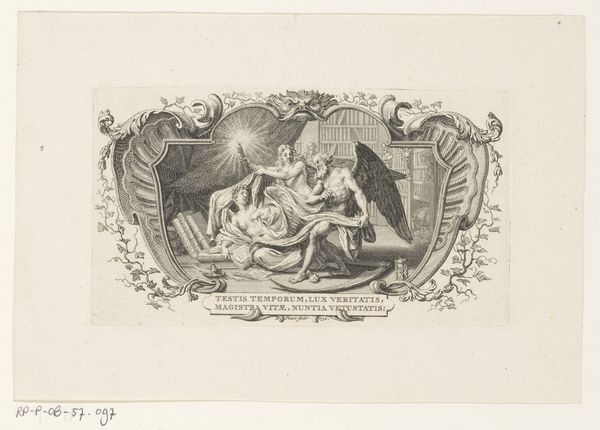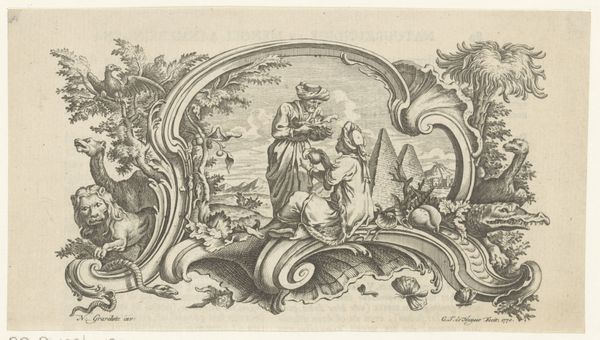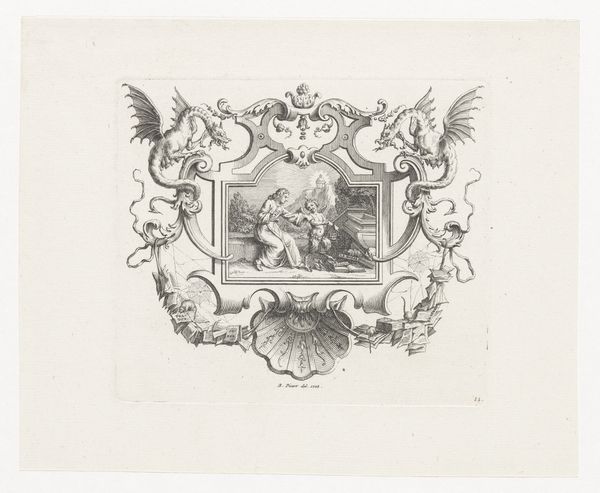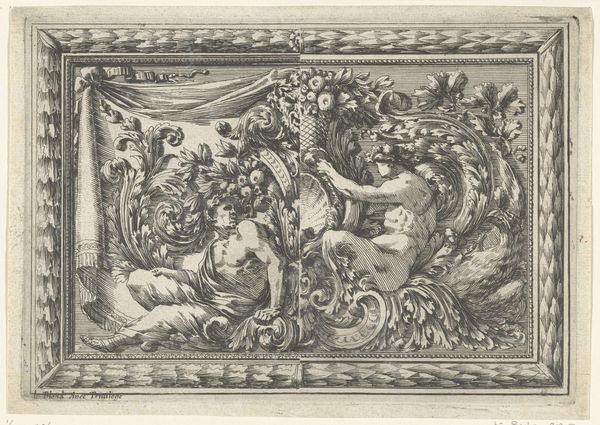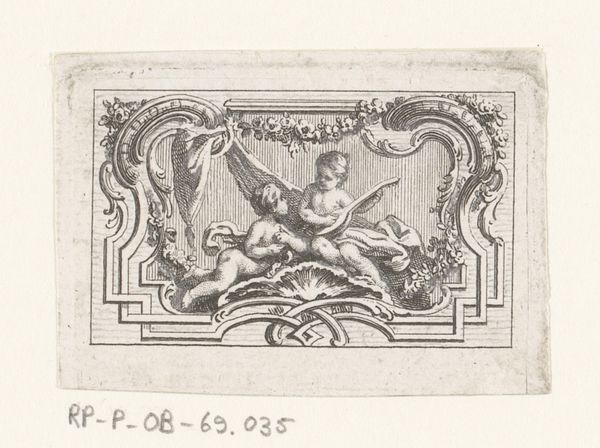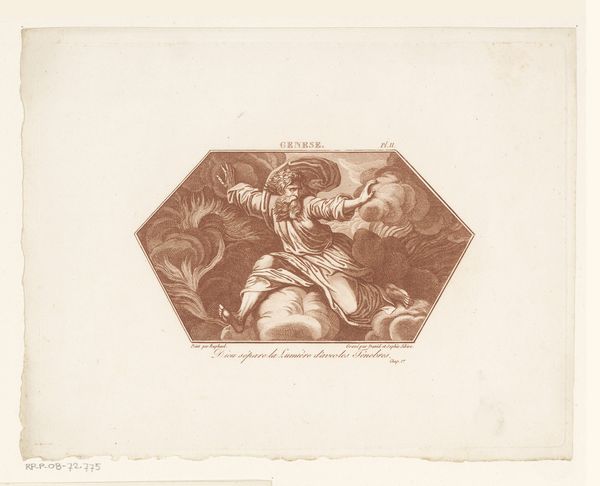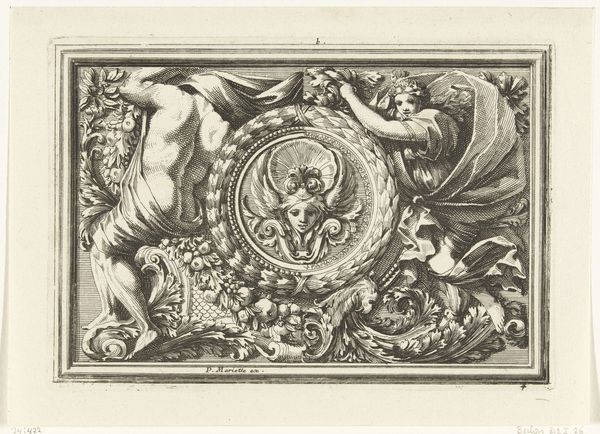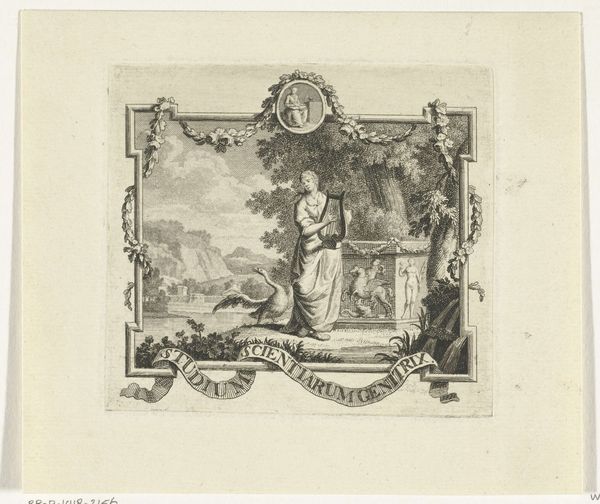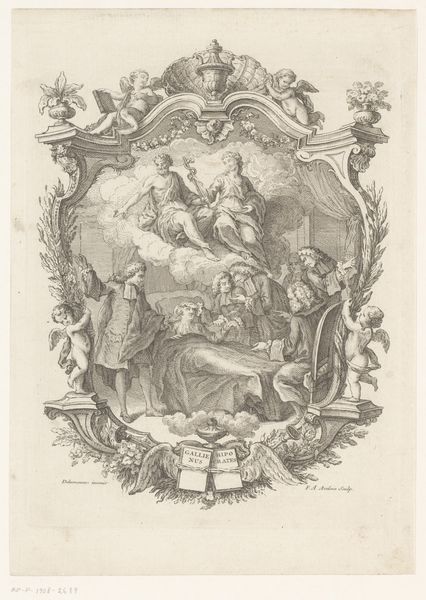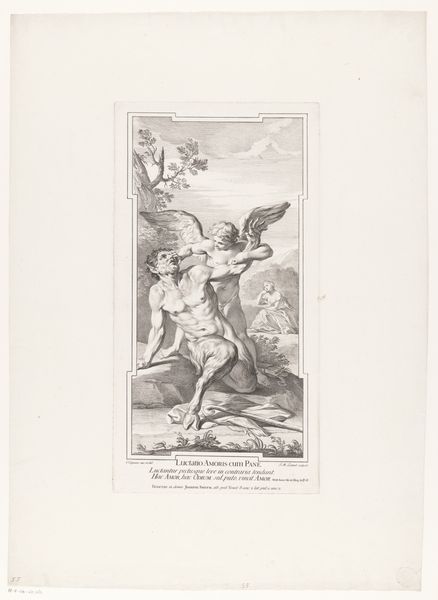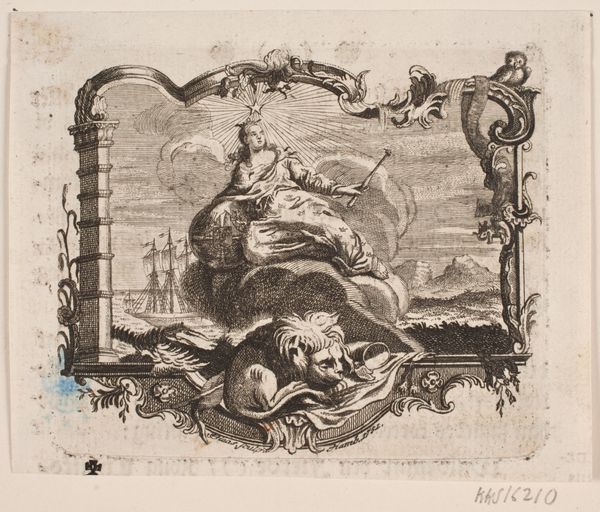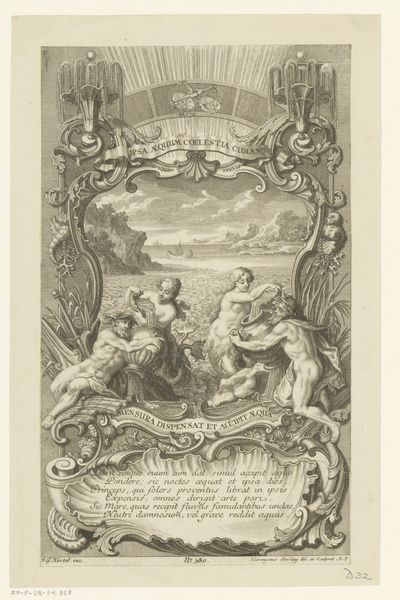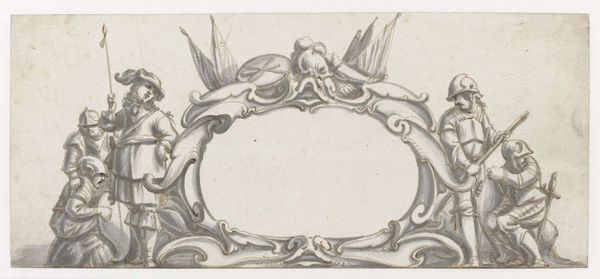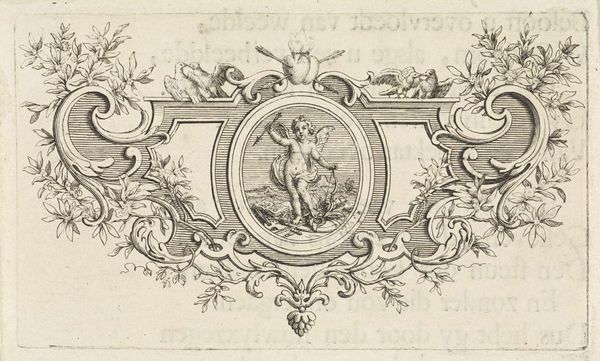
drawing, print, fresco, engraving
#
drawing
#
baroque
# print
#
pen illustration
#
fresco
#
ink line art
#
line
#
history-painting
#
engraving
Dimensions: height 115 mm, width 192 mm
Copyright: Rijks Museum: Open Domain
Editor: So, this engraving, "Putto op adelaar," from sometime between 1738 and 1749, by Gabriel Huquier. The precision of the line work is just incredible. What I find really striking is the way the artist contrasts the smooth skin of the putto with the sharp, detailed feathers of the eagle. What stands out to you in this piece? Curator: Considering Huquier’s context, think about printmaking’s role. These engravings were often commissioned reproductions, not unique art objects but commodities facilitating the dissemination of images, ideas, and styles throughout Europe. Note the inscription: it clarifies Huquier's involvement with the commercial aspects of print production beyond mere artistic skill. Editor: Interesting, so you’re saying this wasn't necessarily about artistic expression, but more about mass production and distribution? Curator: Precisely. Consider the materials. The paper itself, the ink, the printing press: all products of labor and integral to understanding this object. We're not just looking at an image; we’re examining a piece of visual culture shaped by specific production techniques and social needs. The decorative frame further suggests its function as part of a larger system of ornament and interior design available to the wealthy consumer. How might this change your perception of its artistic value? Editor: It shifts the focus, I suppose, from individual genius to collaborative craftmanship and the market it supplied. The skill is still impressive, but it's in service of a different kind of artistic intention, like creating visually appealing reproducible items. Curator: Exactly. Understanding these historical and material processes, including how labor and capital intertwine, challenges us to rethink traditional art historical values centered solely on authorship and aesthetics. We're looking at material culture in action, with consequences for society. Editor: It's a good reminder that even seemingly simple images can be a reflection of the social and economic realities of their time. Thanks for pointing that out. Curator: My pleasure. Every artifact speaks volumes if we examine closely not only the image but also the how and why it came to be.
Comments
No comments
Be the first to comment and join the conversation on the ultimate creative platform.
